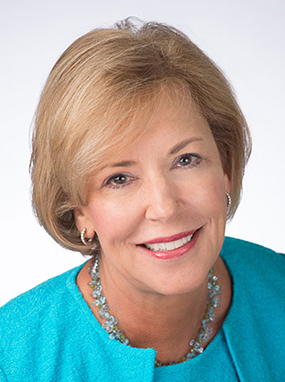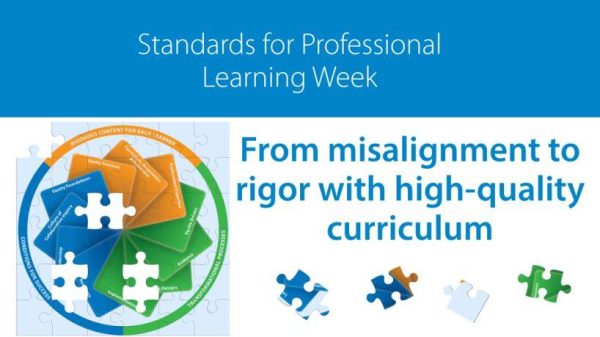Studying and implementing high-quality instructional materials anchors the work of effective learning teams. Learning Forward has elevated the importance of this work for the same reason we amplified the role of equity in our vision — a recognition of the need to prioritize and be explicit about the strategies that have the most potential to transform all students’ learning experiences.
As part of launching this work, Learning Forward released a white paper: High-Quality Curricula and Team-Based Professional Learning: A Perfect Partnership for Equity (Learning Forward, 2018). The research is compelling and convinced us that attention to the issue is paramount. The deeper I studied, the more I became convinced that teachers deserve both high-quality instructional materials and the learning team structures to support implementation.
We have always advocated that professional learning begins with a determination of the student outcomes intended for the investment. The Standards for Professional Learning include the Outcomes standard, which states that educator professional learning, to be effective, is focused on the content students are learning and the materials in use in a system (Learning Forward, 2011). However, interpretations have differed with varying outcomes for educators and students, so the time has come to be more explicit.
In 2013, William Schmidt wrote, “As it stands now, students’ chances to learn challenging content depend on whether they are lucky enough to attend a school that provides it. In effect, a defense of localism in response to questions about content amounts to a defense of inequality in opportunity to learn” (Schmidt & Burroughs, 2013). ''A defense of localism in response to questions about content amounts to a defense of inequality in opportunity to learn'' (Schmidt & Burroughs, 2013). Share on X
The research supporting the importance of high-quality instructional materials is compelling.
A 2012 report from the Brookings Institution compared selected interventions, including placement of math or reading Teach for America educators, placement of more effective math or reading teachers with students, or providing a better curriculum. The curriculum had a statistically better outcome over all other interventions. And something to consider is that placing a curriculum is a sustainable intervention (Chingos & Whitehurst, 2012).
In 2016, researchers from the Center for Education Policy Research at Harvard estimated that in 4th- and 5th-grade math, switching to a top-ranked textbook would translate to student achievement gains of 3.6 percentile points — larger than the improvement of a typical teacher’s effectiveness in the first three years on the job when he or she is learning to teach (Kane, Owens, Marinell, Thal, & Staiger, 2016).
One of the most exciting elements of this movement has been philanthropic investment in organizations like EdReports to review materials for alignment to career- and college-ready standards. EdReports is a valuable resource for school systems during the textbook adoption and curriculum development process. It is also a source of comparison for traditional textbook companies and emerging open source resources that may be less familiar to others.
In addition, philanthropy is supporting the development of open source curriculum to make great curriculum available to all educators. The dollars ultimately saved on materials can be directed to the type of support educators are asking for in terms of time for collaborative study, planning, and adapting materials to the needs of their students.
Over the last two years, some have wondered why Learning Forward is focusing on the instructional materials movement. Multiple experiences led us to the point of making a stronger stance on the critical intersection of high-quality instructional materials and learning team work. Here are a few.
There was the learning team I visited that had regularly scheduled daily time for collaboration. The team lacked confidence in its district curriculum and used team time to coordinate use of materials each team member found from the internet for the upcoming unit.
There were the surveys where teachers ranked professional learning communities lowest among their opportunities for professional learning. Why wasn’t this time, for which so many advocated and rearranged schedules, being leveraged for its best purposes?
There were increasing demands from teachers asking for support in implementing new and higher career- and college-ready standards.
And there was the tremendous response to Learning Forward’s Summer Institutes, when teacher leaders were given the opportunity to go deep into the Standards for Professional Learning as well as materials that could support their planning for high-quality learning experiences for their students.
Learning Forward recognized that teachers deserve meaningful support for their instruction-focused collaborative planning and problem solving.
Over a three-year period, Tracy Crow and I wrote and then rewrote Becoming a Learning Team (Hirsh & Crow, 2018). The book outlines a process for unpacking high-quality instructional materials and studying what students need to know and be able to do, giving greater purpose and focus to the work of learning teams.
The five-stage learning team cycle — analyzing data, setting goals, learning, implementation, and assessing practice — is not intended to help teachers prepare a scripted curriculum. To the contrary, this learning cycle supports teachers in reviewing what students are expected to know and identifying what they need to learn to support student learning.
When teachers invest ongoing, dedicated time to studying instructional materials, they set the foundation for transferring their learning into powerful lessons that can be differentiated and personalized to address individual student success.
The high-quality lessons that motivate, engage, and challenge students enable teachers to achieve the success we desire for them.
In many places, this work is not new. Teachers work tirelessly to engage and motivate their students. They are driven to create the perfect learning conditions and materials so that all students can succeed.
To support those educators, we should consider a fundamental guarantee to all educators — a set of instructional materials that have been documented as aligning to state or district standards and a learning team setting in which to unpack, study, organize, plan, and adapt the materials to their students. This is the perfect partnership for spreading great learning and practice within and across schools.
School systems and schools now have an unprecedented opportunity to bring curricula and job-embedded professional learning for teachers together in service of student learning. While we still have much to learn about how to do this effectively, an increasing number of schools and school systems are taking on the challenge and providing powerful lessons for others to learn from.
The above post is an excerpt from Learning Forward’s latest white paper, 4 Cornerstones of Professional Learning: Fundamental Principles Pave the Way for Educators’ Actions, published February 2019.
To learn more about aligning college- and career-ready standards, curriculum, instructional materials, and effective professional learning, consider Learning Forward’s Summer Institutes, offering four days of deep learning brought to you in partnership with Student Achievement Partners.










